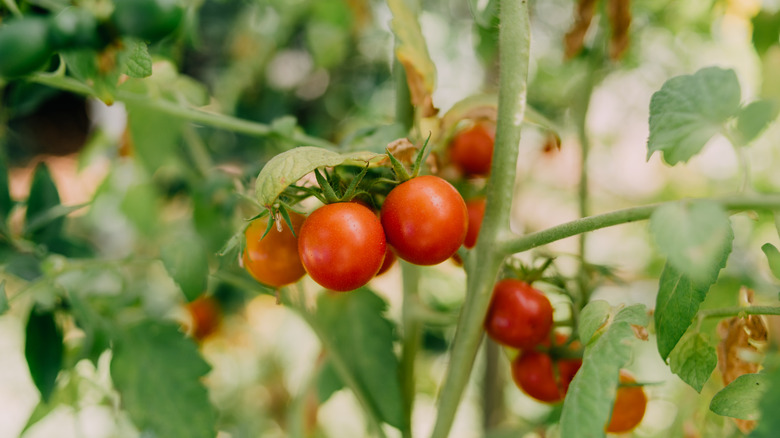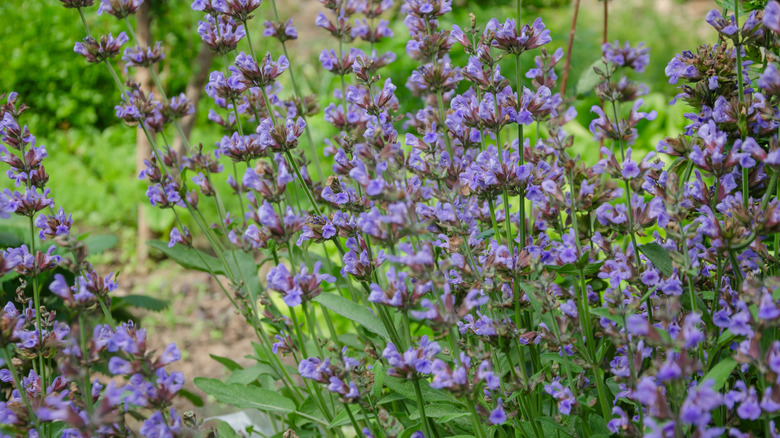The Low-Maintenance Herb You'll Want To Surround Your Growing Tomato Plants With
Ripe, juicy tomatoes are a summertime treat, especially if you've taken the time to grow them yourself. To increase your chances of a bountiful harvest, consider growing a companion plant that repels pests, attracts pollinators, or both. There are a number of herbs that make terrific tomato companions, including garden sage (Salvia officinalis). First of all, sage deters flea beetles. These jumping pests munch on tomato foliage, sometimes disrupting plant growth and fruit production. Second, sage convinces helpful insects to hang out in your garden. This includes insects that pollinate the flowers of vegetable plants, aiding fruit production, and those that prey upon pests that can damage your cherished tomatoes. Best of all, sage is simple to grow in a range of sunlight and soil conditions.
Known for its purple flowers, which bloom early in the summer, sage is a magnet for bees, butterflies, and other pollinators. Bees love the tube-like shape of sage flowers, which they can easily crawl into in their quest to locate nectar. Sage also lures hover flies, which look like small bees but don't sting. Before reaching maturity, hover flies eat as many aphids as they can find. They also prey upon thrips and other minuscule bugs that can bother your tomato plants. Once these little creatures can fly, they pollinate nearby flowers. Also known as syrphid flies and flower flies, hover flies may even help several plants in your vegetable garden make more seeds, including peppers and onions.
Nurturing sage that's planted near tomatoes
Caring for sage is pretty easy if you have a sense of what it needs. In general, this plant isn't terribly fussy about soil and sunlight. It adores full sun but will accept partial shade. It likes loam but is nearly as happy in sandy soil. Just don't let water pool around its roots. If your soil has a lot of clay in it, try mixing in some compost to improve its drainage. Also, avoid one of the biggest mistakes gardeners make with sage: overwatering. It's best to water this plant when the top inch of its soil feels dry. Fertilizer usually isn't necessary for growing healthy sage, so use it sparingly.
Garden sage will grow as a perennial in USDA hardiness zones 4 through 10. Outside this range, you can pot it and add it to an indoor herb garden. You can also grow it in a container outdoors. This is a smart strategy when you're using sage to assist your tomato plants. The reason has to do with water: sage demands drier conditions than tomatoes do. Most tomato plants need deep watering on a regular basis. That's because they perform best when their soil's moisture level is fairly steady. Sage, on the other hand, handles drought like a champ. If you plant sage right next to tomato plants and the soil gets too wet, it may die. To help your tomatoes reap the benefits of growing near sage, place your potted sage nearby but not in the same garden bed.

